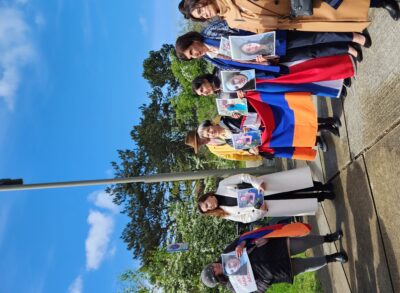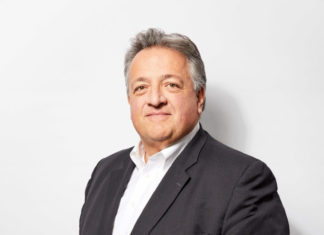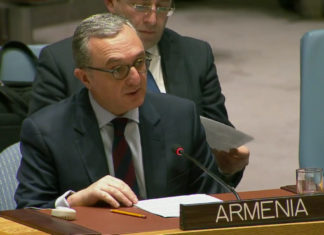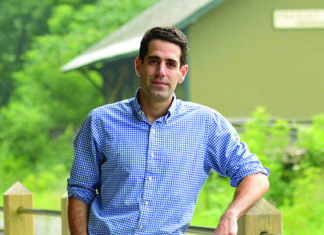By David Weininger
BOSTON (Boston Globe) — Michael Gandolfi spent a chunk of the summer of 2009 at the Tanglewood Music Center, on whose composition faculty he has taught for the last 15 years. One day he was walking across Tanglewood’s Great Lawn when Tony Fogg, the Boston Symphony Orchestra’s artistic administrator, flagged him down. Fogg and then-music director James Levine had for some time been discussing a new commission for the Boston Symphony Orchestra. Gandolfi, it had been decided, was the man for the job.
The meeting may sound casual, but the decision was anything but. Prior to his TMC faculty service, Gandolfi had been a composition fellow there in 1986, one result of which was the orchestral work Transfigurations, premiered by the TMC Orchestra under Oliver Knussen in 1987. The BSO commissioned Night Train to Perugia (2012) and was involved in two other Gandolfi works: movements from The Garden of Cosmic Speculation (2004, commissioned by the TMC), and Plain Song, Fantastic Dances (2005, commissioned by the St. Botolph Club for the Boston Symphony Chamber Players). The organization knew his work well.
There was also nothing casual about the commission itself. It called for a concerto for organ and orchestra, commissioned by the Gomidas Organ Fund in memory of Berj Zamkochian, an organist who frequently played with the BSO. Zamkochian himself established the fund in honor of the great Armenian composer and musicologist Gomidas Vartabed. But the real weight of the assignment lay in the fact that the work was to commemorate the 100th anniversary, this year, of the Armenian Genocide.
The 30-minute piece that Gandolfi ended up writing, Ascending Light, received its world premiere this past week under music director Andris Nelsons with organist Olivier Latry as soloist, on a program that also included Mahler’s Sixth Symphony (also not light listening). But it took Gandolfi some time to find his way into it. For one thing, he hadn’t written for the organ since some student exercises, never mind pairing it with orchestra.
And there was the commemorative aspect of the piece. The Gomidas fund stipulated only that the commission be noted on the score: Gandolfi was not being asked to write a requiem or pay tribute to the dead in any particular way. He worried about how to approach a tragedy of that magnitude without either slighting it or allowing it to overwhelm the pure musical content.
Still, he said during a phone interview, “I’ve now written a host of pieces that have had some connection to history. And I think that Tony and James Levine must have thought that I wouldn’t have ignored the topic, nor would I make a big fuss of it, but somehow I would find a kind of subtle way to approach it.”
The opening music came to him somewhat by surprise. He’d been looking at pictures of some of the Armenian intellectuals who’d been rounded up and killed early in the Genocide, taken earlier in their lives. He thought about what they might have accomplished had they survived.
‘In the face of this terrible catastrophe, Armenian culture has risen out of this, and they’ve survived. It’s like, you didn’t win, you who tried to put us down. The force of the culture, the life force, has won out.’
Suddenly he heard music in his head — not a mournful lament, but dramatic, powerful, affirmative sounds that Gandolfi came to think of as “life force music.” Pounding timpani, similar to the opening of Brahms’s First Symphony. Two sets of tubular chimes. The organ and orchestra at full tilt, in relatively simple harmonies. “I want to blow the roof off the hall,” Gandolfi remembers thinking. “The opening of this piece is gonna be the most powerful thing I can possibly create.”
The message, he decided, was that “in the face of this terrible catastrophe, Armenian culture has risen out of this, and they’ve survived it. It’s like, you didn’t win, you who tried to put us down. The force of the culture, the life force, has won out.”
Once he had a point of departure, the writing proceeded swiftly. After the swaggering power of the first movement, the second begins gently, with Gandolfi’s transcription of a famous Armenian song called The Lullaby of Tigranakert played on the organ. The song, simple and calming, is one of two that Gandolfi selected at the outset to give the piece some Armenian character. The second is a religious melody known as Aravot Lousaber (“Ascending Light”), which follows after a set of variations on the lullaby.
That tune, in Gomidas’s own harmonization, is set for four horns, though Gandolfi was still considering at the time of the interview whether to add an organ part to the initial statement. “I get goose bumps when playing it,” the composer said. “Even if you have no reference point for it, it’s so striking to hear this four-part, mournful. And I feel like that’s balancing the emotion of the defiance of the opening. The lullaby is like the earthiness, and this chorale is the heavenliness.”
Gandolfi freely admits that Ascending Light is not a piece he would have conceived of or written on his own initiative. “Left to my own devices, I’m the most provincial person you’ll ever meet,” he admitted.
And yet, the story of its commission and creation points up the adventure of being a composer — letting someone else see what you might be good at, even though you’ve never tried it or even thought to try it. He compared the new commission to Robert Spano, of the Atlanta Symphony, asking him to write his first piece for chorus and orchestra, or Richard Pittman, of Boston Musica Viva, commissioning a world-music piece when that was terra incognita.
“I tell my students, say yes to everything,” said Gandolfi. “You might be frightened out of your mind, as I am most of the time when I say yes to these things. But you will not learn anything if you say no. It’s a failure, in a sense.
“I’ve done this so many times: said yes and then swallowed hard, and they haven’t always been the most successful things,” he went on. “But I know that in every instance, I really gain from it. I wouldn’t have written an organ concerto. I wouldn’t have had this subject matter informing the piece. But all of these notes wouldn’t have come out. Something else might have, but the truth is, it probably would’ve been much less interesting.”
The concert will be repeated on March 28, and 31 at 8 p.m., March 27 at 1:30 p.m.
BSO to Premiere Major Commissioned Gandolfi Work Commemorating Armenian Genocide
Top 5 Articles
- Trending
- Most Viewed
- Most Commented
- US and European Aid Package to Armenia Is Not Only Cheap, It’s Dangerous
- Fresh Lavash and Armenian Delights at Gyumri in Watertown
- Recipe Corner: The Gutsy Gourmet’s Armenian Eech
- Why Is the Biden Administration Whitewashing Azerbaijan’s Crimes?
- Major Ethiopian Exhibit Comes to Massachusetts Including Armenian Artifacts
- US and European Aid Package to Armenia Is Not Only Cheap, It’s Dangerous
- Valerian Markarov: Writing Russian and Being Armenian in Georgia
- California Armenian Legislative Caucus Foundation Announces Scholarships in Remembrance of the Armenian Genocide
- Recipe Corner: Kohar Avakian’s Cherished Family Recipe for Tutum
- Recipe Corner: Zatiki Chorek: Armenian Easter Bread
- Why I Am Grateful to Erdogan, the Dictator of Turkey
- A Political Whirlwind Engulfs Nagorno Karabakh
- Libya’s Interim Government Recognizes the Armenian Genocide Once Again
- Robert Bedrosian Marries High Tech With Ancient Armenian Manuscripts
- Aleppo Aid through St. Kevork Armenian Apostolic Church of Houston








